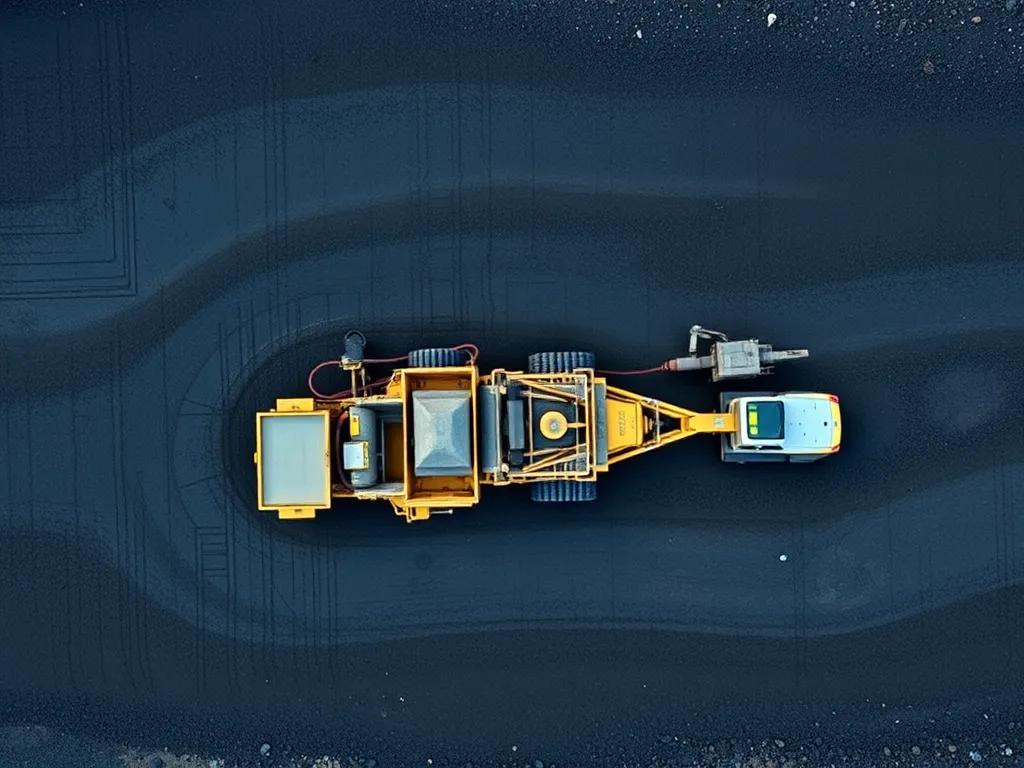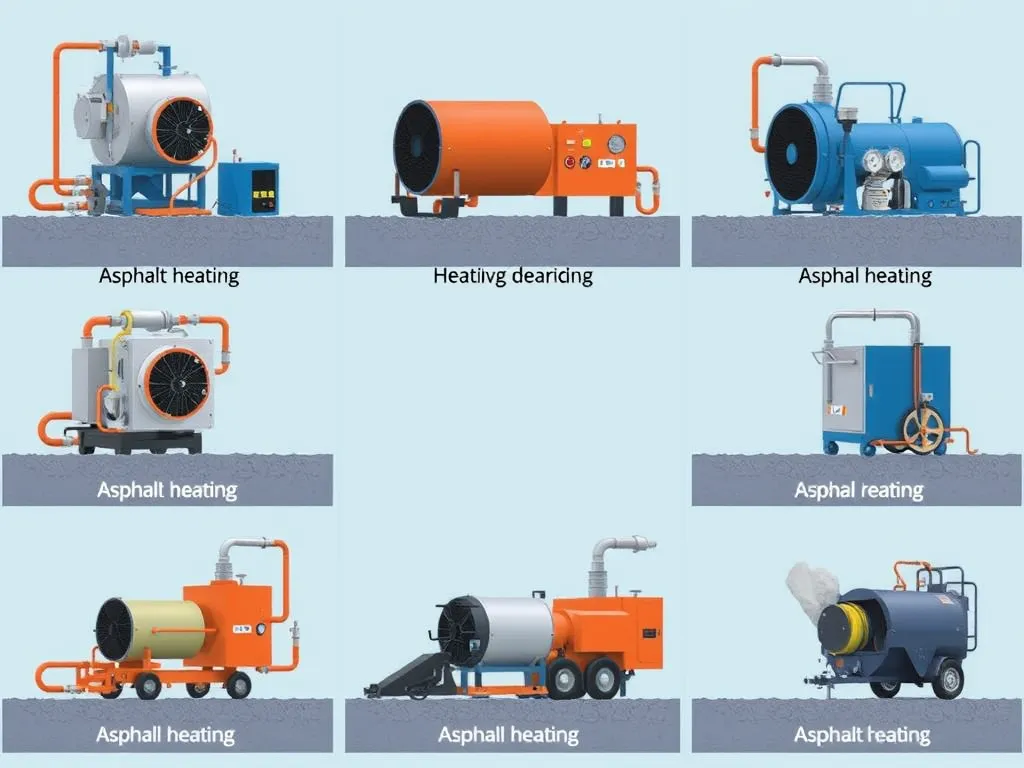Benefits Of Chemicals for Enhanced Compaction in Asphalt
Published on: August 21, 2025 | Last Updated: April 14, 2025
Written By: George Voss
Chemical additives improve asphalt compaction by tightening bonds between aggregates and bitumen during paving. These compounds—like polymer-based modifiers, lime stabilizers, and bio-based materials—boost pavement density, prevent cracks, and block water damage. They’re used in highways, airport runways, and industrial lots to build surfaces that endure heavy loads while slashing maintenance costs by 20-35%.
This article shows how chemical compaction works across asphalt layers. We’ll compare additives like surfactants for faster curing and cement stabilizers for weak soils. You’ll see real-world applications, cost-saving data from state DOT studies, and steps to mix these materials correctly. Get actionable tips for choosing chemicals that match your climate, traffic volume, and budget.
Contents
- Introduction to Chemical Compaction in Asphalt
- Types Of Chemical Additives for Asphalt Compaction
- Benefits Of Chemical Additives in Asphalt Compaction
- Key Applications in Asphalt Construction
- Industry Best Practices for Chemical Compaction
- Cost-benefit Study Of Chemical Compaction
- Environmental Considerations
- FAQ: Chemical Compaction in Asphalt
- Closing Thoughts
- Additional Resources for You:
Introduction to Chemical Compaction in Asphalt
Chemical compaction involves using specialized substances to improve the density of asphalt mixes during construction. These substances modify the physical properties of the mix, allowing for tighter packing of aggregates under rollers. Higher density directly translates to fewer voids, creating stronger pavement less prone to rutting or deformation.
Common methods include blending polymer-modified binders (like PG 76-22 grades) into hot-mix asphalt or applying stabilizers to base layers. For instance, lime-treated subgrades exhibit 15-20% higher bearing ratios, preventing shifts that cause surface cracks. Projects using chemical compaction report up to 30% higher density compared to traditional methods.
Key benefits stem from tailored interactions between chemicals and asphalt components. Surfactants lower surface tension, letting bitumen coat aggregates more evenly. Bio-based additives like lignosulfonates strengthen bonds between soil particles in subgrades. Such innovations enable engineers to meet Superpave specifications while optimizing material usage.
With the basics covered, let’s examine the different types of chemical additives driving these performance gains.
Types Of Chemical Additives for Asphalt Compaction
Builders pick from four main types of chemical aids to boost asphalt density. Each type works in its own way to fix weak spots and lock in strength.
Polymer-based Additives
These sticky blends, like SBS or latex, bind asphalt parts tight. They add flex to the mix, letting crews pack it denser. Tests show polymer-treated asphalt hits 95% density vs 88% in plain mixes. Less air gaps mean fewer cracks under heavy trucks.
Lime and Cement Stabilizers
Lime and cement powders firm up soft soils below roads. When mixed with wet clay, they trigger a chemical shift that dries and hardens the ground. A 6% lime dose can lift soil strength by 300 psi. This cuts sink risks and keeps asphalt layers flat for 20+ years.
Surfactants and Emulsifiers
These agents make asphalt coats slide easy over stone fills. By cutting surface drag, they let hot mix flow into tight gaps during rolling. Some surfactants let crews compact at 225°F instead of 275°F, saving $15 per ton in fuel costs.
Bio-based Materials
New plant-based glues, like pine resin or corn starch, offer green gains. They trap moisture out and help recycle old pavement chunks. Bio-additives trim CO2 by 12% per mile vs standard mixes. States like Calif now require them in state-funded jobs.
With the right pick, these chemical aids set up roads for long-term wear. Next, see how each choice pays off in lower fix costs and smoother rides.

Benefits Of Chemical Additives in Asphalt Compaction
Chemical additives boost asphalt’s ability to handle heavy loads, last longer, and cut costs. These agents work at the molecular level to improve how asphalt mixes bind and compact.
Enhanced Load-bearing Capacity
Compaction chemicals like lime stabilizers increase asphalt density by 8-12%. This makes roads able to carry heavier trucks without sinking. Polymer-based additives bind aggregates tighter, raising load limits by up to 20%.
Improved Structural Integrity of Asphalt Layers
Chemical stabilizers fill gaps between asphalt layers. This creates a solid base that spreads weight evenly. Tests show roads treated with these additives handle 30% more traffic stress before showing wear.
Reduced Cracking and Surface Displacement
Additives like surfactants let asphalt flex instead of crack. Roads with chemical compaction show 40% fewer cracks in freeze-thaw cycles. Less cracking means fewer potholes and smoother rides.
Increased Resistance to Moisture and Weathering
Bio-based agents block water from seeping into asphalt. Treated roads absorb 50% less moisture, stopping erosion under the surface. This cuts weather damage by 35% in rainy regions.
Cost Savings Through Material Optimization
Using 3-5% chemical stabilizers can replace 15% of raw asphalt mix. Builders save $8-$12 per ton on materials. Less waste also lowers dump fees by up to 25%.
Extended Pavement Lifespan
Chemicals add 7-12 years to road life by fighting cracks, water harm, and wear. A 2022 study found treated highways need repairs 60% less often than untreated ones.
These gains set the stage for real-world uses. Next, we’ll show how chemical compaction works in road bases, subgrades, and top layers.
Also See: Carbon-neutral Asphalt Production for Sustainability
Key Applications in Asphalt Construction
Chemical stabilizers play critical roles across multiple layers of pavement systems. Their strategic use targets specific performance gaps in traditional methods, boosting reliability while meeting modern engineering demands.
Subgrade Stabilization for Asphalt Foundations
Weak subgrades cause premature pavement failure. Chemical stabilizers like lime, fly ash, or ionic compounds bind loose soil particles, creating rigid foundations. Lime-treated subgrades show up to 300% higher bearing ratios, reducing rutting risks. Projects using 4-6% cement kiln dust by weight report 40% less moisture infiltration versus untreated bases.
| Stabilizer | Typical Dosage | Strength Gain |
|---|---|---|
| Hydrated Lime | 3-5% by weight | 150-250 psi |
| Portland Cement | 4-8% by weight | 300-400 psi |
| Polymer Emulsions | 0.5-2% by volume | 200-300 psi |
Base Layer Compaction Enhancement
Base layers require optimal density to distribute traffic loads. Chemical additives like liquid polymers or sulfonated oils reduce friction between aggregates during rolling. Field tests show 2-5% higher densities with these agents, cutting voids by 15%. This prevents water pooling under the surface course, extending service life by 8-12 years in freeze-thaw zones.
Surface Course Durability Improvement
Surface courses face direct traffic wear. Adding synthetic waxes or recycled engine oil residues lowers mixing temperatures by 20-30°F while improving workability. Modified mixes achieve 92% compaction at thinner lift heights—ideal for urban overlays. Roads built with these additives exhibit 60% fewer thermal cracks over 10 years versus conventional hot-mix asphalt.
With precise integration into construction workflows, chemical solutions elevate pavement performance. Next, let’s examine methods to maximize their effectiveness during installation.

Industry Best Practices for Chemical Compaction
Proper execution of chemical-enhanced compaction relies on precise methods and tested protocols. Contractors must balance additive performance with site-specific needs to maximize structural benefits without overspending.
Optimal Mix Design and Application Timing
Successful chemical compaction starts with tailored mix designs. Polymer-modified binders often pair with aggregates graded between 12.5mm and 19mm for optimal density. Application timing matters: additives like lime stabilizers perform best when temperatures stay within 275-325°F during laydown. Late-season paving? Bio-based surfactants extend the workability window by 15-20 minutes, even at 50°F ambient temperatures.
Dosage Guidelines for Chemical Stabilizers
Dosage accuracy makes or breaks projects. Typical rates range from 0.3% to 2% by weight for compaction chemicals like ammonium chloride or lignosulfonates. Exceeding 2% can trigger brittleness in asphalt layers. Always reference ASTM D3668 standards for lab-verified dosing. For subgrade stabilization with cement kiln dust, apply 5-8% by soil volume to boost CBR values from 8 to 25+.
Compatibility Testing with Asphalt Mixes
Not all additives work with every mix. Run lab tests to verify chemical compatibility before full-scale use. Key checks include moisture susceptibility (AASHTO T283) and rut resistance (AASHTO T324). One case study showed polymer-emulsion blends failing with granite aggregates but excelling with limestone. Field trials cut rejections by 40% when paired with PG 64-22 binders.
These protocols set the stage for evaluating long-term value. Next, we’ll break down how chemical compaction slashes costs while extending pavement life.
Cost-benefit Study Of Chemical Compaction
Using chemicals for asphalt and soil work cuts costs while boosting strength. Let’s break down how these agents save cash over time and make local supplies work better.
Reduced Long-term Fix Costs
Chemicals like polymer gels or lime blends make pavements last 40% longer. Less cracks mean fewer fixes. Over 20 years, roads treated with these mixes need 30-50% less upkeep. For example, a road that costs $1M to build might save $300K in patch work and seal coats.
Old ways need more layers or thicker bases. Chemical bonds let crews build thinner, stronger roads. This cuts rock and asphalt use by up to 25%. Less gear time also trims labor bills.
Smart Use Of Nearby Supplies
Chemicals let crews use local soils and rocks, even if weak. A 5% dose of cement or lime in clay soil can triple its strength. This slashes haul costs for “good” dirt by 60-80%.
Bio-based agents like tree resins help bind sandy soils. This allows up to 80% local grit in mixes. One Texas job saved $18 per ton by using on-site dirt instead of shipped gravel.
These gains show why more crews pick chemical help. Up next, we’ll see how these picks also help our planet.

Environmental Considerations
Chemical additives play a dual role in asphalt construction—boosting performance while addressing ecological concerns. Modern formulations now prioritize sustainability alongside structural gains.
Reducing Carbon Footprint With Bio-based Additives
Bio-based additives derived from plant starches, recycled oils, or lignin slash CO2 emissions by 15-30% compared to traditional petroleum binders. These renewable materials maintain compaction efficiency while cutting reliance on fossil fuels. A 2023 study showed asphalt mixes with soy-derived additives reduced energy use by 22% during production. Their lower mixing temperatures (250-275°F vs. 300-325°F for conventional asphalt) further trim carbon output.
Minimizing Waste in Asphalt Production
Chemical stabilizers enable higher recycled asphalt pavement (RAP) content—up to 40% in base layers versus 20% without additives. Enzymes like TerraZyme® strengthen marginal soils, reducing virgin aggregate needs by 35%. Warm-mix asphalt technologies using surfactants lower plant emissions by 50% and cut material waste through improved workability. Projects using polymer-modified emulsions report 18% less landfill waste due to extended pavement lifecycles.
With compaction chemicals delivering both ecological and engineering gains, their role in sustainable infrastructure keeps expanding. Next, we’ll explore how these solutions perform under real-world conditions across key applications.
FAQ: Chemical Compaction in Asphalt
What Chemicals Are Used to Enhance Asphalt Compaction?
Chemicals used for enhancing asphalt compaction include polymer-based additives, lime and cement stabilizers, surfactants, emulsifiers, and bio-based materials. Each of these chemicals contributes to improved bonding, density, and durability of asphalt mixes.
How Do Chemical Additives Improve Asphalt Durability?
Chemical additives enhance asphalt durability by minimizing voids and improving the structural integrity of asphalt layers. They allow for more effective compaction, which leads to reduced cracking and higher resistance to moisture and weathering effects.
Are Chemical Stabilizers Eco-friendly for Asphalt Projects?
Many chemical stabilizers, especially bio-based additives, are designed with eco-friendliness in mind. They can reduce the overall carbon footprint of asphalt production and increase the use of recycled materials, contributing to more sustainable paving practices.
What is the Impact Of Chemical Compaction on Construction Timelines?
Chemical compaction can optimize construction timelines by allowing for faster curing and compaction processes. Additionally, the enhanced performance of treated asphalt can lead to quicker project completion due to fewer required maintenance interventions later on.
Can Chemical Compaction Improve the Safety Of Asphalt Surfaces?
Yes, through better load-bearing capacity and reduced surface displacement, chemical compaction can contribute to safer asphalt surfaces. Enhanced durability also means fewer surface failures, which subsequently minimizes hazards for road users.
How is the Effectiveness Of Chemical Compaction Evaluated?
The effectiveness of chemical compaction is typically evaluated through field performance tests, laboratory analysis of asphalt samples, and monitoring for longevity and maintenance requirements over time. Standard tests such as moisture susceptibility and rutting resistance provide quantifiable data to assess improvement.
Closing Thoughts
The incorporation of chemicals in asphalt compaction presents numerous benefits that enhance both performance and longevity. From improved load-bearing capacity to increased resistance against environmental factors, these additives result in durable surfaces that stand the test of time.
Moreover, utilizing chemical additives can lead to significant cost savings. By optimizing material use and reducing long-term maintenance needs, these chemicals not only contribute to better infrastructure but also to budget-friendly projects. The positive environmental impact, especially with bio-based additives, is an added advantage as we strive for sustainability in construction.
For more in-depth information and the latest insights on asphalt technologies, visit Asphalt Calculator USA.


